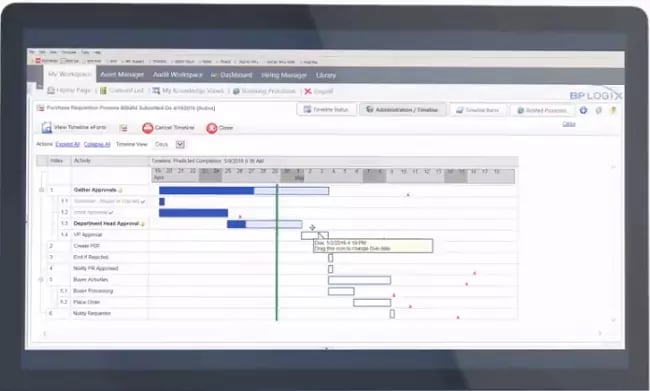
There were more than 20 million students enrolled in colleges in the United States in 2018, and that number is forecast to increase in the coming decade. More than 2/3 of all college students receive some kind of financial help in the form of grants and scholarships. Just as admissions are critical to an institutions success, ensuring that these same students have access to funding sources is critical to the future of higher education.
Colleges and universities operate to serve their students, and the financial aid they provide reflects this commitment. Unfortunately, however, most of the processes and workflows that support grants and scholarships exist in a combination of paper-based formats and disparate digital repositories, which can make it difficult to identify and utilize the necessary data. Lacking a system for moving this data from intake to funding, colleges are at risk of preventing deserving students from being able to attend and benefit. Fortunately, process automation enables higher education institutions to facilitate the requests of students to help them fund their education.
Is Automation the Future of Education Process Management?
Automation is the foundation of simplifying grant and scholarship management. Just as workflow has enabled human resources in higher education, it is also being used by colleges and universities to facilitate the flow of that data of students, financial institutions, and universities so it can be evaluated and disbursed. Access to this data is only one aspect of the process. Utilizing it and processing it with the right permissions, and with speed, give all parties the best shot at ensuring grants and scholarships are awarded efficiently.
But the process-driven coordination of financing, collection, and student lifecycle management demands an effective workflow framework, one that incorporates activity among government bodies, non-profits (who are often the benefactors who distribute scholarship money), students, parents/guardians, and financial aid departments within the schools. Ensuring your grants and scholarship management solution has the capability to navigate this intricate web of decision-makers and groups in an organized fashion is pivotal in expediting the processes around financing students.
Streamlining all Points in the Financial Aid Process
Managing workflows for grant and scholarship awards with a platform like Process Director helps present a clear picture to scholarship and grant administrators of all aspects of the financial aid process.
Financial aid processes typically require the input of multiple sources, and not all of them exist within the same organization. Process Director can apply a case management approach which is optimized to coordinate the activity of all involved in the process. This includes university departments like the Office of Financial Aid, Admissions, Registration and Academic Records. External groups include banks and other funding sources, government agencies who disburse grant money, and private institutions and individuals who fund private scholarships.
The Tools Necessary for Comprehensive Education Process Management
Pulling all of this together demands a broad assortment of tasks that includes data that includes paper records, approvals, data sharing among applications and databases, and forms management. With so much at stake, it is essential that deadlines are met and that milestones are attained. Procedure Director generates arrangement among, and between, process phases and different information sources. The result is a system that's inclusive of participants, allowing efficiency, compliance, and consistency. The course of action is all about efficiency and speed. Process Director applies abilities for lightweight application creation, workflow automation, forms management, and integration through a process that uses these steps:
Data collection: students submit applications for grants and scholarships from a variety of sources. This data will likely include artifacts such as an essay, high school transcripts, letters of recommendation, and family tax history among others. All of these items are relevant to the deciders of how grant money is distributed.
Case management framework: Every application is tied to a unique student, and can be considered as an individual case. As a case is created, it will likely be stored in a database, LDAP repository, or cloud storage bucket. But the case is very much active as member schools evaluate the application. Process Director uses a case management approach which enables each student’s file to be moved through the processes and milestones required by financial aid committees and departments.
Distribution of funds: Process Director is built with workflow automation as a critical component, which gives those involved with financial aid evaluation the ability to create rules and processes that will distribute applications internally to important decision-makers, and externally as application data is shared among banks and government groups.
Review/Evaluation: decision-makers will not miss data or milestones when the process is managed with automated workflow. This ensures that all available data can be shared and reviewed, but ultimately, it means that all students have an equal opportunity to demonstrate their needs.
As competition among schools becomes fiercer, there is an increasingly need to provide access to all worthy applicants. Process Director provides digitally transformative education workflow solutions that include facilitating scholarships and grants management, so deserving students can benefit from a higher education experience.





